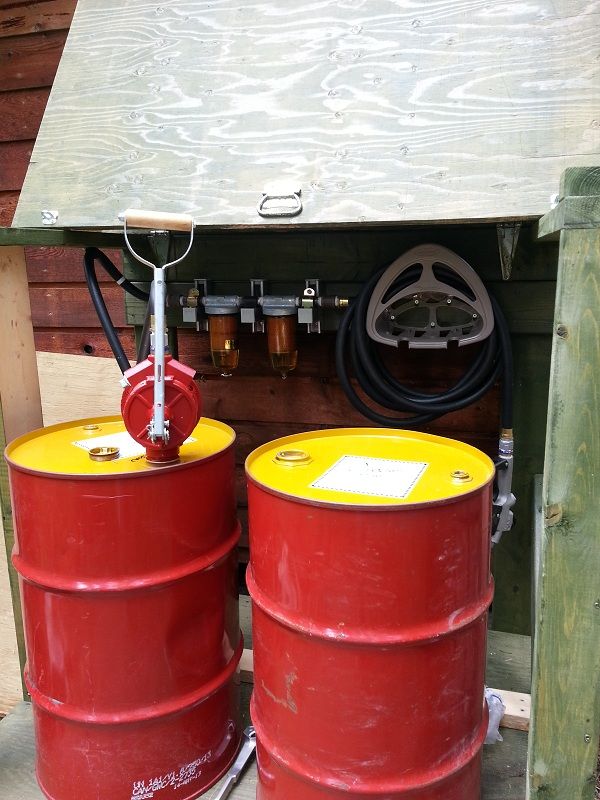Alright, so having recently completed my seasonal turnaround maintenance (F200 manufactured 11/07, "2008" model, 205 hours, 60 of those from me this year), I have a few questions for the gurus here. And the yahoos too. I'm committed to doing as much of my own maintenance as I can, since the local Yamaha shop at my lake is not somewhere I would spend money, and the nearest good shop is 140 miles away.
Anyway, my questions are:
1. The motor oil was fairly dark when changed. Now, I did run a pint or so of pure seafoam through after changing my Racor filter element, as well as a tank of fuel richly mixed with seafoam, as well as running ring free all season. I noticed the black floating slick after the seafoam shock, and a lot of black residual from the upper exhaust port after the seafoaming (I don't think the first owner used any kind of additives). Is it reasonable to expect some of the loosened deposits to have migrated into the oil as well, causing it to be fairly black?
2. The leg oil was ok but also a little dark, kind of a blue color. Is this normal?
3. Last year I picked up new leg oil screws, both top and bottom. The top one didn't seat well during the season, and I tightened it to stop it from dribbling. In reinstalling it after this year's leg oil change, I stripped something. Examining the screw, its threads were galled and shaved, they weren't a sharp V shape. Without any good options at hand, I reinstalled the original top screw, and it seemed to seat. However, I don't know if I'm out of the woods yet. Realistically, the leg threads are probably stripped a bit, although they didn't look so visually, mind you, oil was flowing past them as I was trying to look at them. Should it fail to seal properly in the future, is there some kind of dope that will work in a pinch, or should I put in a helicoil and be done with it? If so, what size would I need?
4. One of the lower unit tutorials said to grease the prop fitting until grease came out. Well, I gave it a few shots, and it just pressurized the cavity instead of coming out visibly like it does from other fittings. I tried to not get too rammy with the grease gun, but my basic question here is, am I going to be blowing out some kind of seal by having pressured up the propeller bearing chamber or whatever is greased at this nipple? Can the pressure be relieved by pressing on the nipple center? Should it be? Thoughts?
5. In general, what are the most important preventative maintenance items, in your opinion?
Anyway, my questions are:
1. The motor oil was fairly dark when changed. Now, I did run a pint or so of pure seafoam through after changing my Racor filter element, as well as a tank of fuel richly mixed with seafoam, as well as running ring free all season. I noticed the black floating slick after the seafoam shock, and a lot of black residual from the upper exhaust port after the seafoaming (I don't think the first owner used any kind of additives). Is it reasonable to expect some of the loosened deposits to have migrated into the oil as well, causing it to be fairly black?
2. The leg oil was ok but also a little dark, kind of a blue color. Is this normal?
3. Last year I picked up new leg oil screws, both top and bottom. The top one didn't seat well during the season, and I tightened it to stop it from dribbling. In reinstalling it after this year's leg oil change, I stripped something. Examining the screw, its threads were galled and shaved, they weren't a sharp V shape. Without any good options at hand, I reinstalled the original top screw, and it seemed to seat. However, I don't know if I'm out of the woods yet. Realistically, the leg threads are probably stripped a bit, although they didn't look so visually, mind you, oil was flowing past them as I was trying to look at them. Should it fail to seal properly in the future, is there some kind of dope that will work in a pinch, or should I put in a helicoil and be done with it? If so, what size would I need?
4. One of the lower unit tutorials said to grease the prop fitting until grease came out. Well, I gave it a few shots, and it just pressurized the cavity instead of coming out visibly like it does from other fittings. I tried to not get too rammy with the grease gun, but my basic question here is, am I going to be blowing out some kind of seal by having pressured up the propeller bearing chamber or whatever is greased at this nipple? Can the pressure be relieved by pressing on the nipple center? Should it be? Thoughts?
5. In general, what are the most important preventative maintenance items, in your opinion?


Comment